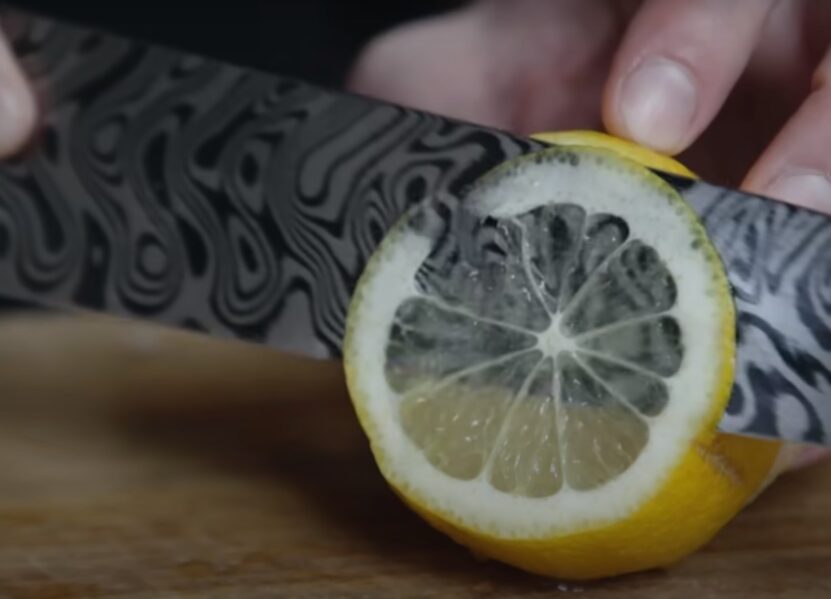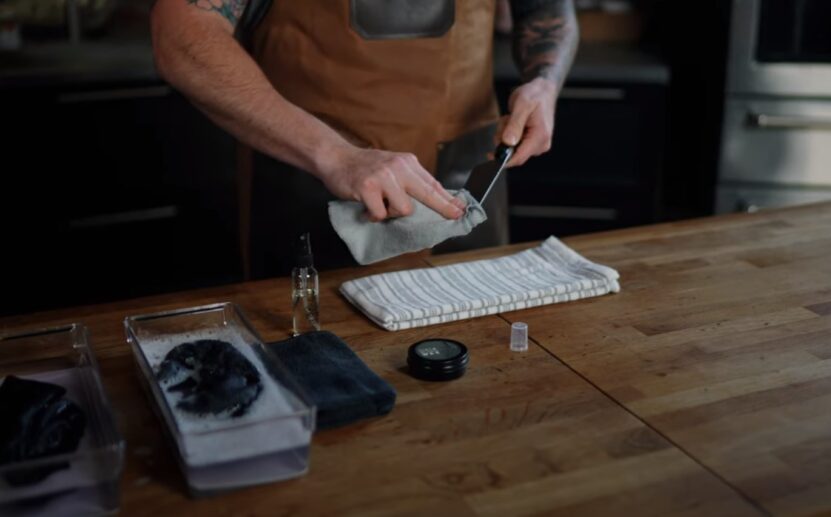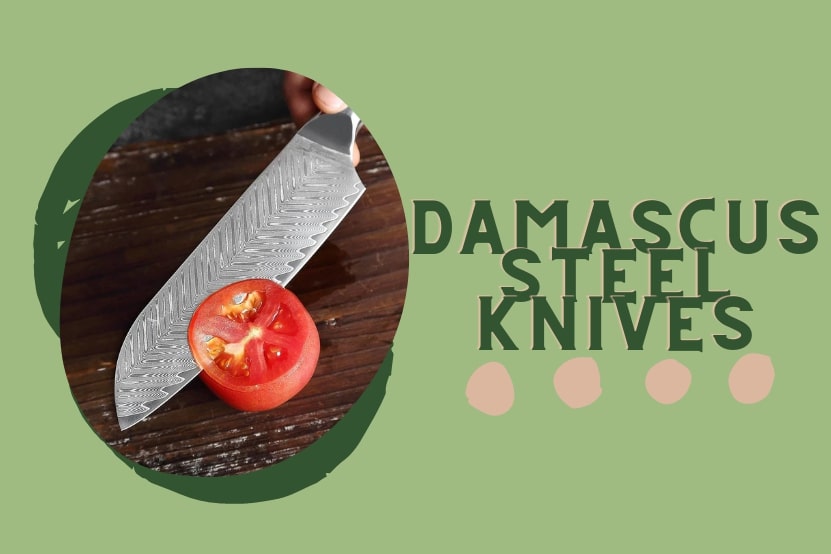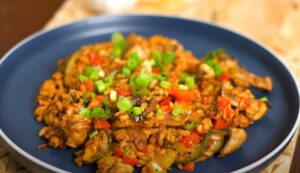When I first saw Damascus steel knives, I thought they sure looked cool! But I had lots of questions too – like what makes them different and do those patterns affect how well they cut? I also wanted to know if they were worth the money.
So I did a ton of learning – reading online, talking to experts, and watching videos too. Finding out about the craft that goes into making them and their history really opened my eyes. I started to understand what made these knives special.
After all that research, I felt convinced.
In my work where being precise with ingredients is important, Damascus knives have shown me they’re more than just pretty to look at. They last a long time, hold their sharp edge, and let me cut exactly how I need to make quality snacks. It’s helped me work faster and do an even better job!
There is An Interesting History Behind the Knife

A long time ago in India, people figured out how to mix iron and carbon together in a special way. This lets them make a super strong and bendy kind of steel called wootz. Swords made from Wootz were better than other steels back then – they didn’t break or get dull as fast.
The neat part was how the carbon mixed into the metal. It made a swirly pattern on the surface that looked like water. This “Damascus” steel got its name from that.
Wootz Steel was a big deal. Swords made from it got traded all over places like Asia, the Middle East, and Europe. The city of Damascus in Syria was an important place where many were sold.
Even though Wootz started in India, “Damascus” became the name used for blades made from it. The name might come from the Arabic word for water or from a famous sword maker too.
So in summary – Damascus steel was an awesome invention that led to strong, long-lasting swords with a cool watery look. That tradition continues today.
How Are They Made Today?
When we talk about “Damascus” knives today, it’s mainly referring to the look of the metal, not always what it’s made of.
To get those cool patterns, makers layer different types of steel and use heat and hammering to weld them together. This is more hands-on than other methods and lets them create all kinds of unique designs, from watery waves to fancy pictures.
Knife makers, such as Dexter, can choose from many steels like stainless or high-carbon ones. Mixing alloys lets them tailor the knife to be hard or flexible depending on its use.
By picking special steels and maybe adding stuff like vanadium or nickel, they have control over both the beauty and functionality. This results in Damascus knives being art pieces that hold up as great tools too.
There’s lots of options to customize them, so no two are exactly alike. Pretty neat if you ask me.
Why Are They Worth So Much?
The way Damascus knives are made can differ between makers. Some spend days hammering layers of steel by hand to fully combine the alloys. This can result in knives with patterns all the way through or ones with a solid inner core surrounded by a decorative outer layer.
Even though the patterns are mostly for looks, what makes these knives really valuable is the work put into each one. No two are exactly alike because of the skill used. The time and care that goes into crafting each Damascus knife by the bladesmith is what sets them apart. You can feel proud owning a piece with such individuality and care behind it.
How To Pick The Right One?

After lots of research on different brands and styles, I settled on a Tojiro nakiri knife. Its thin, even slices are perfect for prepping fruits and veggies so my snacks look super fresh and tasty.
A Shun petty knife is my other go-to. It’s awesome for small jobs like dicing herbs. The sharp edge and comfortable grip have made it a must-have in my kitchen.
I made sure to choose trusted brands known for using top-notch metals and doing careful work. Cheap knock-offs wouldn’t do the job right. I wanted knives with real Damascus patterns from layering steel the traditional way. That attention to quality matches how much care I put into my snacks.
Bob Kramer’s Damascus knives were on my wish list too for their looks and performance. But I went with knives tailored for my business needs first. The craft that goes into these Damascus knives, both how they appear and work, really helps me get snacks ready that people will want to eat and look at too.
Maintenance

Taking good care of my Damascus steel knives is key. Here’s what I do:
- I always wash them by hand – no dishwasher. Using a mild soap, warm water and a soft sponge, I gently wipe away any food bits.
- Drying is super important too. I dry the blade right away with a cloth so no water spots form. Leaving it wet could cause rust.
- To protect the metal, I put mineral oil on it sometimes. Just a little oil and a soft cloth is all it takes to keep the blade from rusting.
This keeps my knives in tip-top shape so they stay sharp. It also helps that awesome Damascus pattern to last too.
Closing Thoughts
If you really take pride in your kitchen gear and don’t mind the extra TLC, a Damascus knife might be the perfect addition.
To me, the best knife isn’t just about how sharp it is or what it costs. It’s one that feels right in my hand and makes cooking more enjoyable, not just easier. These knives definitely fit that bill!

Hello guys, I’m a 36-year-old mother who runs a small business selling healthy snacks. I love to cook, and because I was a stay-at-home mom for a long time, I tried a lot of different things around the house. I’m glad that I can spend my free time writing on this blog with my two best friends.





